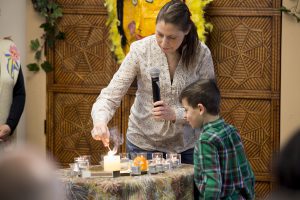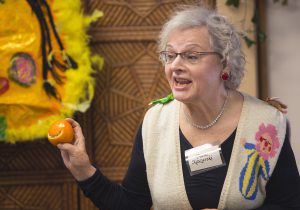By Mary S. Matsui, PhD

This review grew out of my participation in the “Reopening Task Force” for the Society. The task force was put together early in 2020, when we assumed that the pandemic would last for a few months and we assumed that we would need just a few measurable endpoints to let us know when we would go back to “normal”—back to the “before days.” We now realize that this process is going to be much more complicated and long-term than we initially thought.
Open vs. Closed cannot be a simple green-light, red-light decision and cannot be made on the basis of one or even two variables. A “simple” number such as R0 cannot be used to make a go/no go decision (even if we agree to rely on the Bergen County vs. NJ vs. US, etc. number), because other factors are more indicative of risk. Also, with the coming of variants, the R0 variable in the epidemiologic calculation for spread will change. Therefore, we need to remain flexible, and we need to monitor, assess, and discuss the available information and data on a regular basis. A critical aspect of this decision-making is that we do everything we can to protect the health and lives of our members.
“Reopening” is used somewhat generally to refer to in-person activities. In-person activities fall into several categories:

- In-person (hybrid) Sunday platforms with a limited in-person attendance
- Sunday platforms at the building with in-person speaker; Sunday platforms with virtual speaker
- In-person outside activities, including women’s lunch, group hikes or walks, “backyard” events
Therefore, “reopening” has many forms. This means that decision-making must take into account many variables, all focused on keeping our membership safe. Some of the variables include:
- The number (density) of in-person attendees, based on whether attendees from different households can stay at least 6 feet apart
- Behavior of attendees during an event (singing, talking, not maintaining physical distancing, or not wearing masks consistently and correctly)
- Vaccination status of people
- Length of time they are together
- Status of infectivity in NJ, and in Bergen County
- The travel of attendees to other counties, states, and countries
- Other people that any attendees have been in contact with—remember, the people present at any one event can be in close contact with many other people with different transmission statuses
- The spread of variants
- Our membership risk levels (what kind of risk members find acceptable)
- Related safety measure, e.g., proper mask-wearing, distancing, etc.
As of April 15, 2021
The bad news: A new report says New Jersey is the third-least-safe state amid Covid, and it ranks low in several categories. On Wednesday, Gov. Phil Murphy announced that the positivity rate is up 3 percent since Monday, increasing from 8.39 percent to 11.04 percent. Indeed, the latest data released from the CDC show New Jersey wedged inside a new Covid hot zone. Citing the continued threat of the Covid crisis in New Jersey, Murphy has announced that the public health emergency initiated a year ago has again been extended another 30 days.

Murphy said late Thursday that the Department of Health’s handling of the continued high rate of new cases while also expanding vaccine distribution has made it necessary to extend the public emergency. The number of new daily cases continues to remain high, though the numbers have fallen slightly since January.
“Our vaccination program is expanding vigorously and quickly, but Covid-19 remains a threat to New Jerseyans,” said Murphy. “As we move to extend vaccine eligibility to all residents of our state, the need for all available resources could not be more important.”
Remember that the vaccines are not 100 percent effective. They are very very good, but not perfect.
Michigan was among the first states to report numbers in April: 246 people who were fully vaccinated (more than two weeks out from their second dose) came down with Covid from January to March. Three of those people died. That was out of a total of 1.8 million people in the state who were fully vaccinated at that time.
Data from other states suggest similar low rates of breakthrough infection. Oregon, for instance, reported 168 cases of breakthrough infection among more than 700,000 fully vaccinated people as of April 2, with 19 hospitalizations and three deaths. Minnesota reported 89 cases among 800,000 fully vaccinated people as of March 22, with no deaths.
Other states that have reported breakthrough cases include Washington (102 cases, eight hospitalizations, two deaths among 1 million fully vaccinated); South Carolina (155 cases among more than 560,000 fully vaccinated); and Nevada (58 cases among more than 500,000 fully vaccinated).
The good news: Outlook for September: The vaccines are highly effective and multiple vaccinated people in the same location should be able to interact together, and in fact, the CDC has said this. The CDC has said there’s no reason that vaccinated people can’t hang out together in small groups without masks.
My opinion: There is no need to rush to reopen. Let’s aim for September to have hybrid platforms, once the audio-visual technology is ready and the repair work on the building is finished. We have a good idea about what will be required of members when the building is reopened. We plan to require vaccination cards and a brief questionnaire.
Additional Information
How will we regulate maximum attendance at platforms?
Capacity: We have to remember all relevant dimensions–in other words, the density of bodies. Twenty-five people in a living room is different from 25 people in an auditorium. Two hundreds people in a backyard is different from 200 people in Overpeck Park. The governor states this as percent of capacity. And, of course, room capacity is determined by a number of factors, including surface area of floor, ceiling height, number of doors, intended use, etc.
And note the highlighted sentence from the governor’s report–apparently there’s a difference between religious and non-religious wedding venues. Interesting.
And, by the way: The International Building Code recommendation for spaces with un-concentrated use of chairs and tables is that 15 square feet on the floor of the building be dedicated to each occupant. However, “In the United States, the National Fire Prevention Association (NFPA) also forbids an exit from leading occupants through a kitchen or storage room on their way out of the building,” so this technically would further decrease our capacity.
Current NJ guidelines on percent of capacity: Restaurants, bars, and other food establishments can operate at 50 percent capacity (up from 35 percent). Gyms, athletic facilities, and personal-care businesses, such as nail salons and barbershops, may also operate at 50 percent capacity. Indoor entertainment facilities, including movie theaters and performing arts centers, can operate at 35 percent capacity, with a maximum of 150 people. Nonreligious weddings and funerals are among indoor activities that are restricted to 35 percent of a venue’s capacity, with a maximum of 150 attendees. Religious weddings, funerals, and other ceremonies can use up to 50 percent of a venue’s capacity.* Large entertainment venues with fixed seating of 5,000 or more, such as stadiums, can allow patrons to attend indoor events at 10 percent capacity and outdoor activities at 15 percent capacity.
*No, I have no idea why religious weddings are capped differently than non-religious weddings.
From the CDC: We are in a complicated stage of the Covid-19 pandemic. Americans are being vaccinated every day at an accelerated pace. As of April 15, more than 125 million Americans have received at least one dose of vaccine, and more than 78 million Americans are fully vaccinated. And yet, Covid-19 cases and hospitalizations are increasing in some areas of the country, and among younger people who have not yet been vaccinated. The reasons for these increases are complicated but potentially related to emerging SARS-CoV-2 variants that are becoming predominant in some communities.
Nationally, Covid-19-related emergency department visits as well as both hospital admissions and current hospitalizations have risen among patients ages 18 to 64 years in recent weeks. The good news is that emergency department visits and hospitalizations among people ages 65 years and older have decreased, likely demonstrating the important role vaccination plays in protecting against Covid-19. As of April 15, 80 percent of people 65 years or older have received at least one dose of vaccine and 63.7 percent are fully vaccinated.
As access to vaccines for all Americans increases, we have reason to be hopeful. However, until more of the US population is fully vaccinated, consistent use of prevention strategies, such as universal and correct use of masks, social distancing, and hand washing, will help to limit the spread of SARS-CoV-2, the virus that causes Covid-19. Even if you have been fully vaccinated against Covid-19, you should keep taking these everyday precautions in public places.
CDC Links
https://www.cdc.gov/coronavirus/2019-ncov/covid-data/covidview/index.html
https://www.cdc.gov/coronavirus/2019-ncov/community/faith-based.html
Mary S. Matsui is a longtime member of our Ethical Culture Society and a member of the “Reopening Task Force.” She holds a PhD in cell and molecular biology from the Mailman School of Public Health, Columbia University, and is semi-retired after many years of research in photobiology, air pollution, dermatology, and human nutrition.


